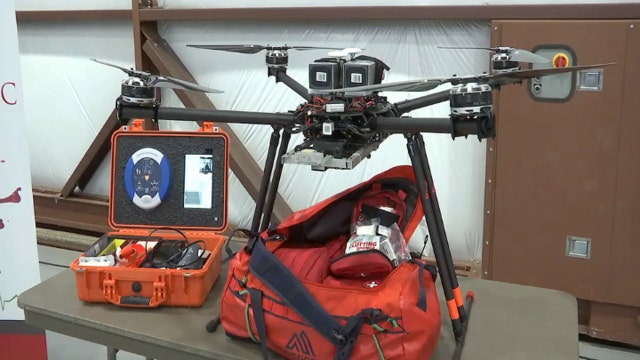Medical drones could be the next wave of emergency response
The Health Integrated Rescue Operations Project would work with first responders to deliver timely medical care during natural disasters, mass casualty events or in hard to reach areas
Drones may be helping mass shooting and natural disaster victims in the near future. Medical experts from William Carey University College of Osteopathic Medicine and an aviation expert at Hinds Community College, also in Mississippi, teamed up to develop a medical drone that could be deployed before first responders arrive.
The Health Integrated Rescue Operations, (HiRO) Project uses a drone to deliver a medical kit containing emergency supplies and Google Glass for video conference capability. This allows first responders to instruct bystanders on how to assist those in need.
Co-developers Italo Subbarao and Guy Paul Cooper came up with the idea after an EF-4 tornado struck Hattiesburg, Miss. in 2013.
“We were able to create somewhat [of] an ambulance drone to be able to go out to where there’s a victim of an unfortunate event,” Subbarao said.
The device cannot replace an ambulance but buys a victim much needed time before emergency personnel arrive on the scene. The medical kits were put together using recommendations from the Department of Homeland Security’s Stop the Bleed initiative. They include tourniquets and other items that slow the loss of blood.
Richard Patrick, senior advisor of first responder policy for the DHS, said more research needs to be done before the drones are deployed during a mass shooter incident, but there is a need.
“There’s a definite utility not just in medical use in certain areas but in a broad spectrum of the first responder and homeland security responsibilities,” Patrick said.
Current Federal Aviation Administration (FAA) regulations limit drone flights to below an altitude of 400 feet and the devices must be flown within the line of sight of the operator.
“That’s very restrictive for us to be able to go out and deploy in disaster areas where we need to fly some distances to reach the people in need,” said Dennis Lott, director of the Hinds Community College drone program, who assisted with the pairing of the medical kits and drones.
The FAA does make exceptions by granting government agencies such as fire departments and police stations the right to fly drones in U.S. airspace but approval could take hours, making it difficult to respond to emergency situations.
So far, the developers of the HiRO drone have received interest from state, local and national agencies. Subbarao said that he currently has four working prototypes and hopes to work with local governments first in the development and use of the HiRO drone.
“It is just a matter of time before the drones are universally adopted for emergency and disaster response toolkits,” Subbarao said.
The new technology shows promise but it may take some time to perfect. During a demonstration, a remote for one of the devices malfunctioned forcing the drone the land on its side rather than upright. Lott admitted that a newly paired remote for the drone was the main issue but he’s optimistic about the benefits of the technology. The FAA doesn’t plan on releasing an updated rule on drones and crash avoidance systems until sometime in 2017. The proposed rule would then be open for public comment, meaning it could be years before medical drones are in operation.





















